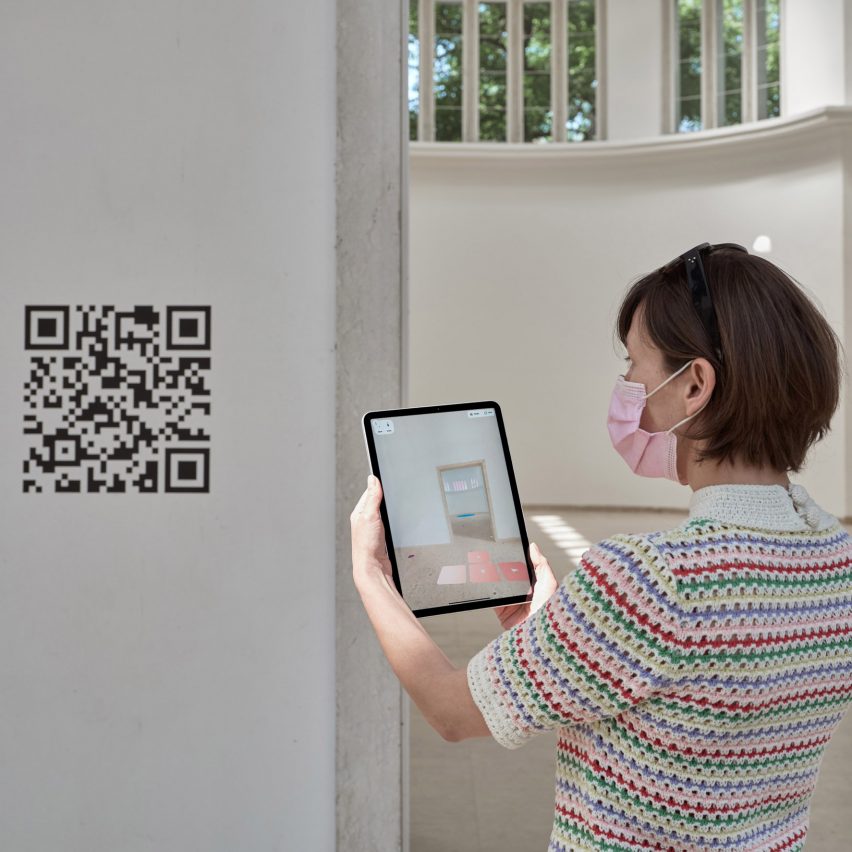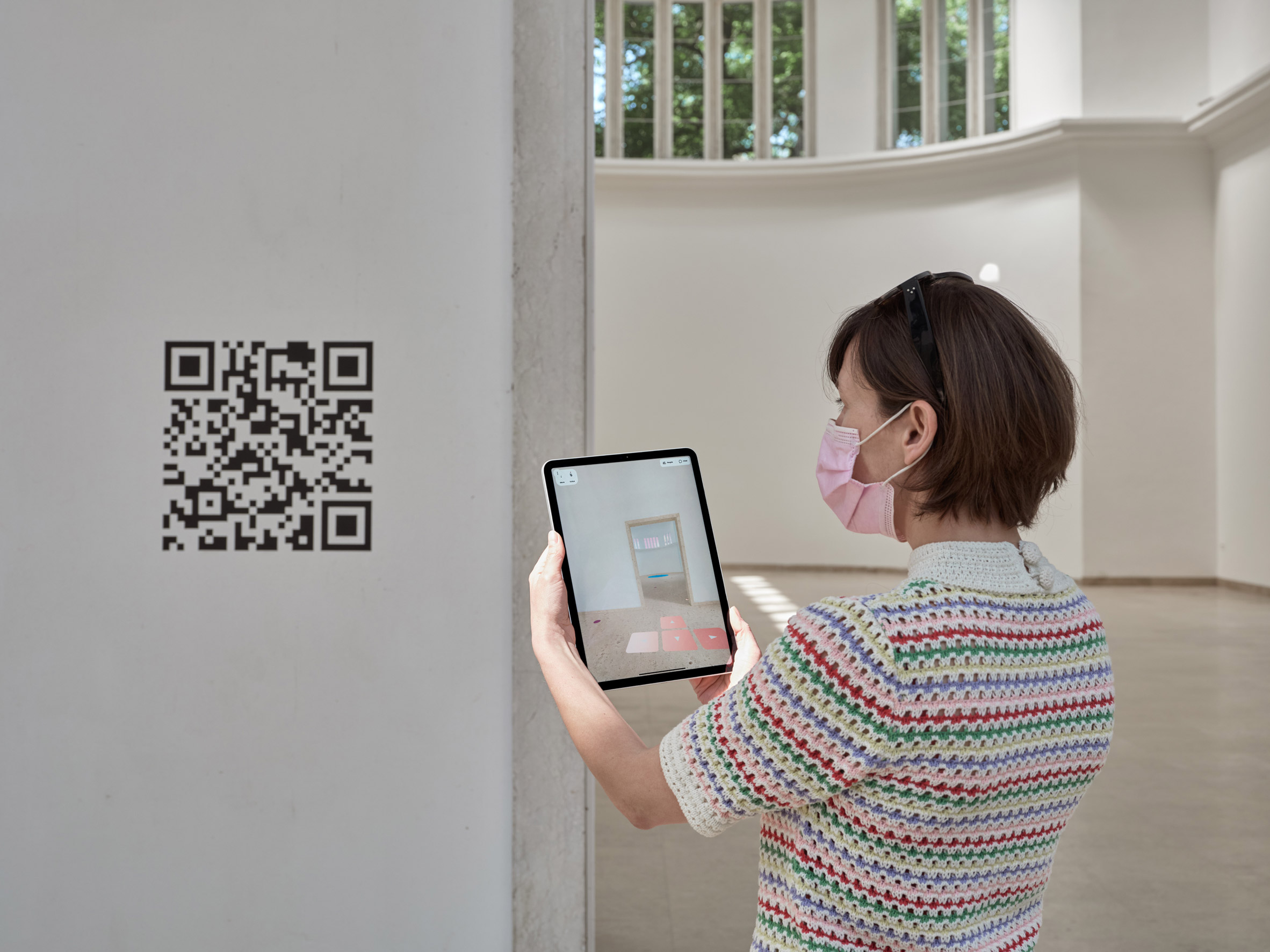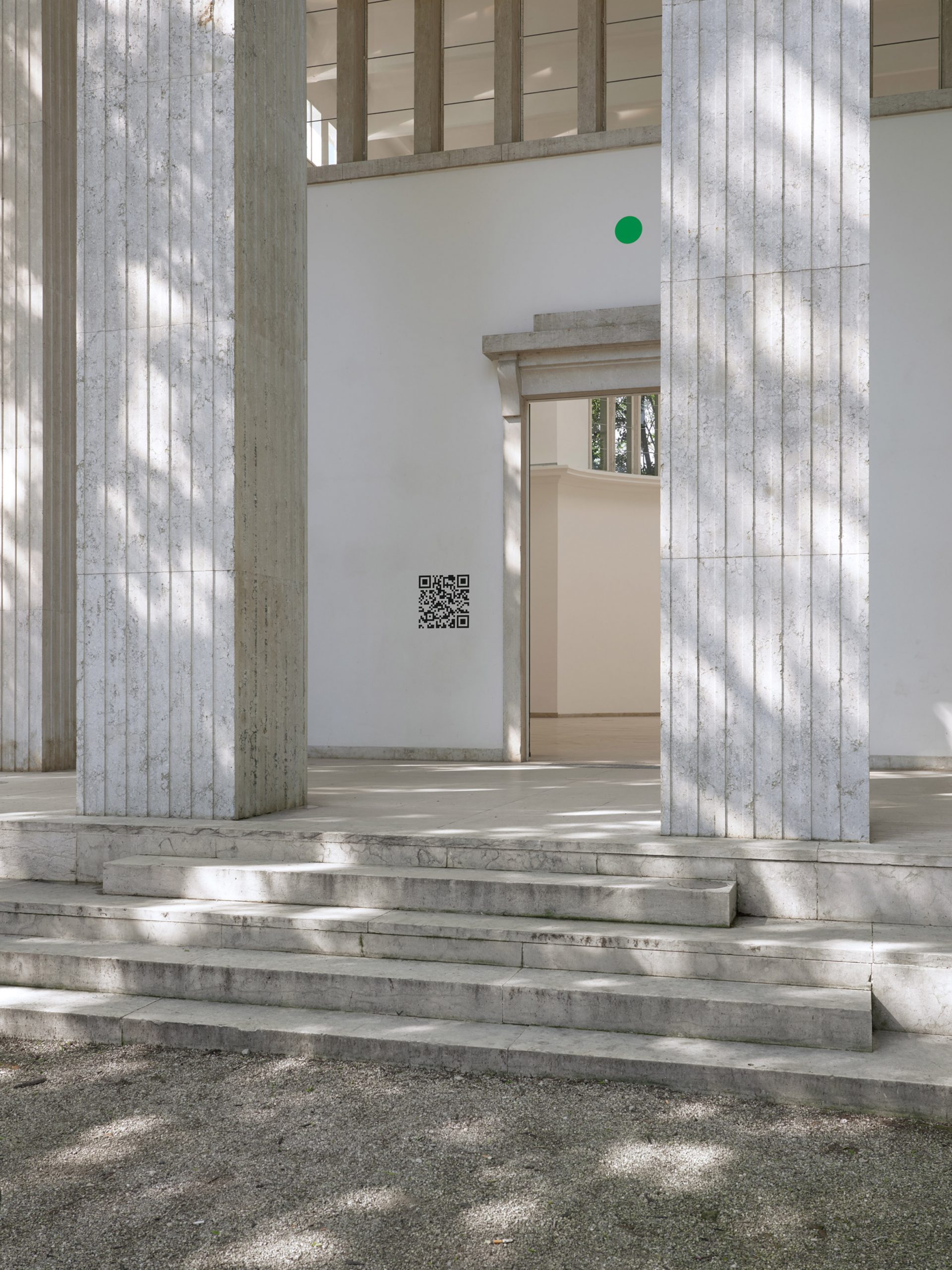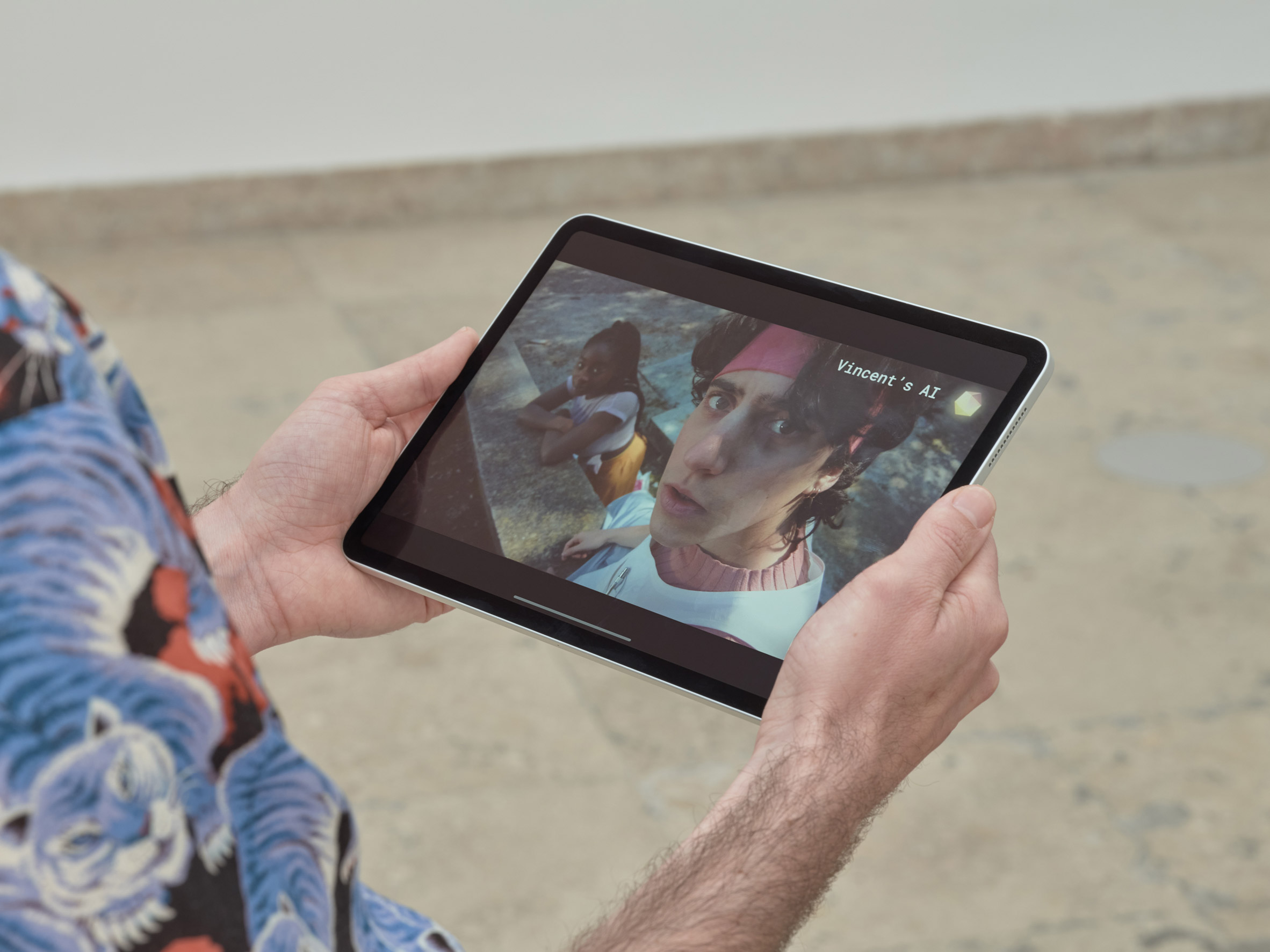
Germany has divided opinion at the Venice Architecture Biennale by inviting visitors to wander around an empty pavilion and experience digital content via QR codes.
Called 2038 – The New Serenity, the presentation consists of a virtual “Cloud Pavilion” accessed by pointing smartphones at matrix barcodes on the walls of Germany’s neoclassical exhibition venue in the biennale gardens.

Visitors can then watch movies on their devices that explore how the world could be in 2038.
The exhibition was curated by an international team of over one hundred architects, ecologists, artists, scientists, writers and politicians. Among the team 2038 members are Tatiana Bilbao and Patrik Schumacher.
“Architects realized that they don’t only build in space, but also in time,” the curators said.
“In a series of films, 2038 tells the story of a better world in which everything, though imperfect, is better in some pretty profound and radical ways.”
Visitor says pavilion is “a little arrogant”
The pavilion is one of the most controversial contributions to the biennale, infuriating some visitors and delighting others.
“The German pavilion was just a few QR codes,” wrote architecture writer Tim Abrahams on his Instagram. “I did try and trigger them but honestly I found my soul calcifying after about 3 seconds.”
“A weak idea made worse by what I think is a widespread digital fatigue and yearning for the real,” he added.
“I feel this is a little arrogant,” said Radka Ondráčková of Czech architecture conference reSITE.
“Everybody has made an effort to come here so why rely on people seeing the content on their device?”

But architect Lina Ghotmeh thought the pavilion was “really funny”.
“I don’t think it’s arrogant,” said the French-Lebanese architect. “I think it’s provocative.”
She added: “You ask yourself: is this what we need to do now, when we have this digital world that opens up to us, and we shouldn’t waste materials?”
Pavilion was curated by collaborative team
The pavilion aims to invite viewers to discover a story “between fact and fiction.”
“The story is based on the knowledge and visions of a collaborative team of international experts from architecture, art, ecology, economy, philosophy, politics, science, and technology,” team 2038 explained.
“Together, team 2038 strives to explore our future society through prefigurative politics, illustrating modes of organization and social relationships to come.”

Scanning the QR codes in the pavilion allows visitors to watch films including Interrail 2038, which features two 18-year-olds in a peaceful future world.
Another, called History Channels, sees experts focus on history through the 2020s and 2030s to answer the biennale’s theme, How will we live together?
Users can also scan QR codes to join the Cloud Pavilion, a virtual platform where you choose a room and an avatar before entering.
The meeting space was built on open-source, virtual-reality platform Mozilla Hubs and hopes to let visitors meet people from around the world to discuss visions of the future.
Throughout summer and autumn, a series of collaborative events will use the virtual formats to feedback into the physical space.
Photography is by Federico Torra.
The German pavilion is at the Giardini as part of Venice Architecture Biennale, which takes place from 22 May to 21 November 2021. See Dezeen Events Guide for details of how to attend the event, as well as a list of other architecture and design events taking place around the world.
The post Germany's 2038 pavilion at Venice Architecture Biennale puts QR codes on walls of empty building appeared first on Dezeen.
